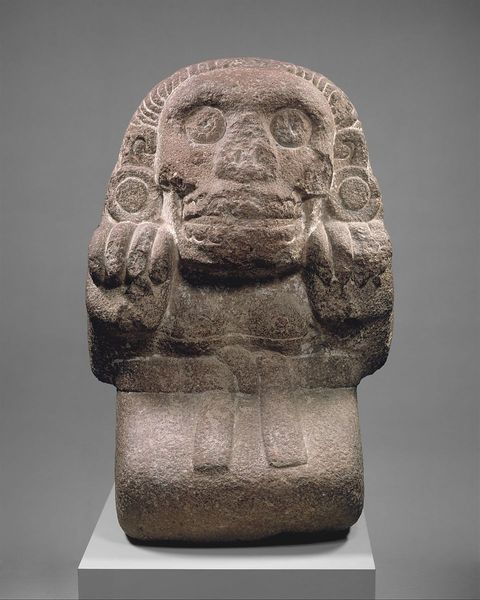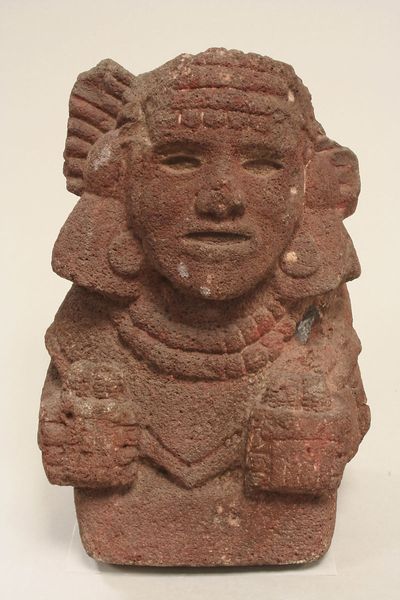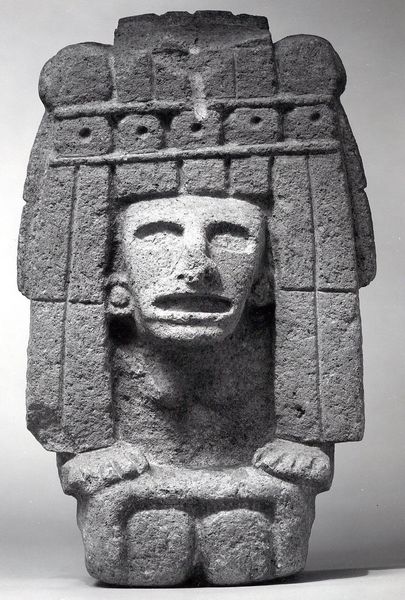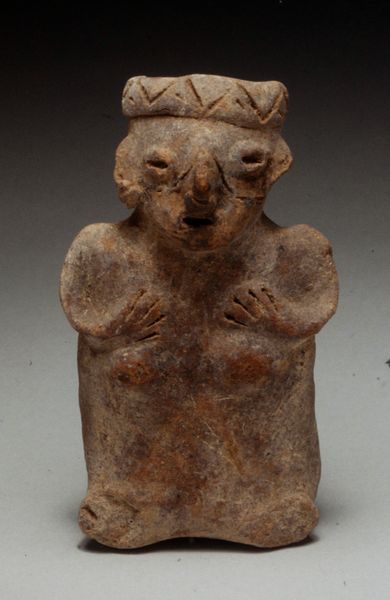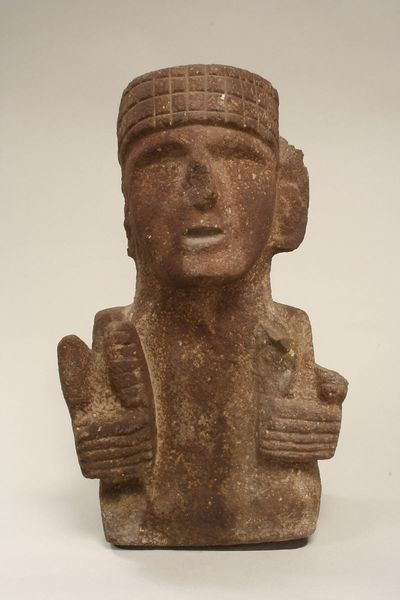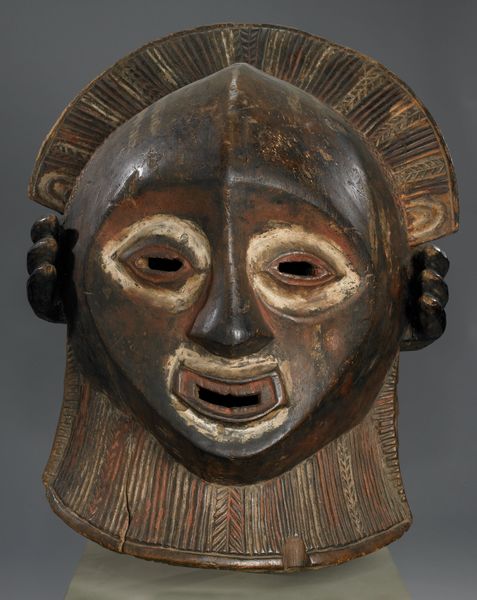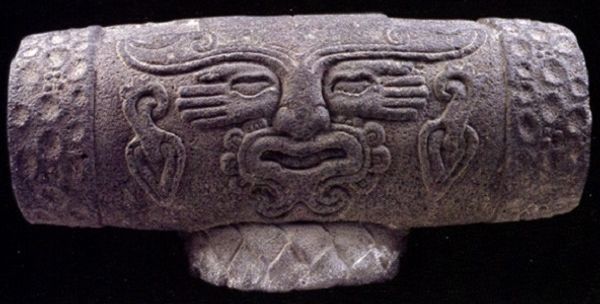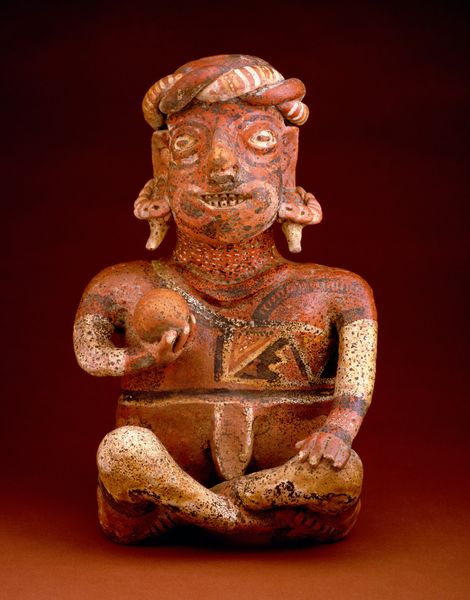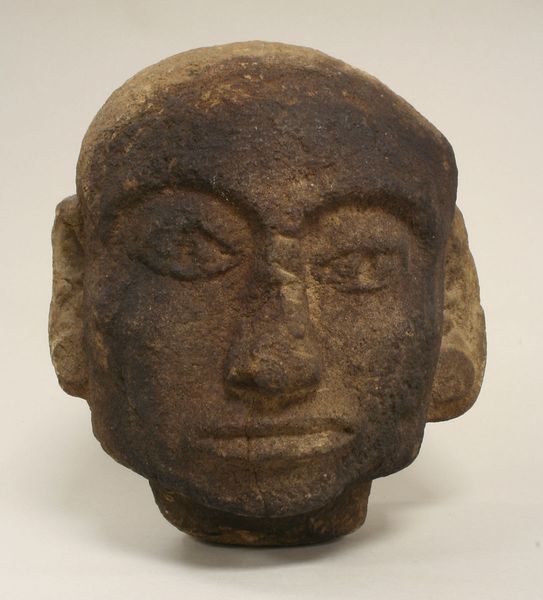
ceramic, sculpture, terracotta
#
sculpture
#
ceramic
#
figuration
#
sculpture
#
terracotta
#
indigenous-americas
Copyright: Public domain
Curator: Editor: Here we have a fragment of an Aztec ceramic sculpture, thought to be an anthropomorphic brazier, dating back to around 1300. The three faces are incredibly striking! What are your initial thoughts? Curator: Looking at the fragmented nature and the ceramic material itself, I immediately think of the physical process and social labor that went into creating this piece. Consider the clay – where did it come from? How was it sourced, processed, and then molded? Editor: So, you’re not necessarily focusing on the ritualistic significance? Curator: That's secondary, isn't it? First and foremost, we have the tangible evidence of labor. This wasn't simply an act of artistic creation; it was a communal endeavor deeply rooted in material availability and technical skill. How does the repetitive nature of ceramic production influence our understanding of Aztec society? Editor: That’s a completely different lens than I expected. I suppose I was stuck on what the three faces *meant.* I see now that the *how* is just as interesting. Was terracotta common in Aztec culture at the time? Did the average person have access to these materials, or were they exclusively reserved for ritual objects like this? Curator: Exactly! We should ask: What determined the value of this object, its worth in terms of labour or religious association? And furthermore, whose labor are we looking at – what do we know about who could produce these objects, who got access to these resources? Editor: Okay, I’m reframing it now: it is less about high art or ritual and more about understanding material access, knowledge and Aztec social systems, using this object as evidence. I’ll have to look into the role of artisans in that society. Thank you!
Comments
No comments
Be the first to comment and join the conversation on the ultimate creative platform.
